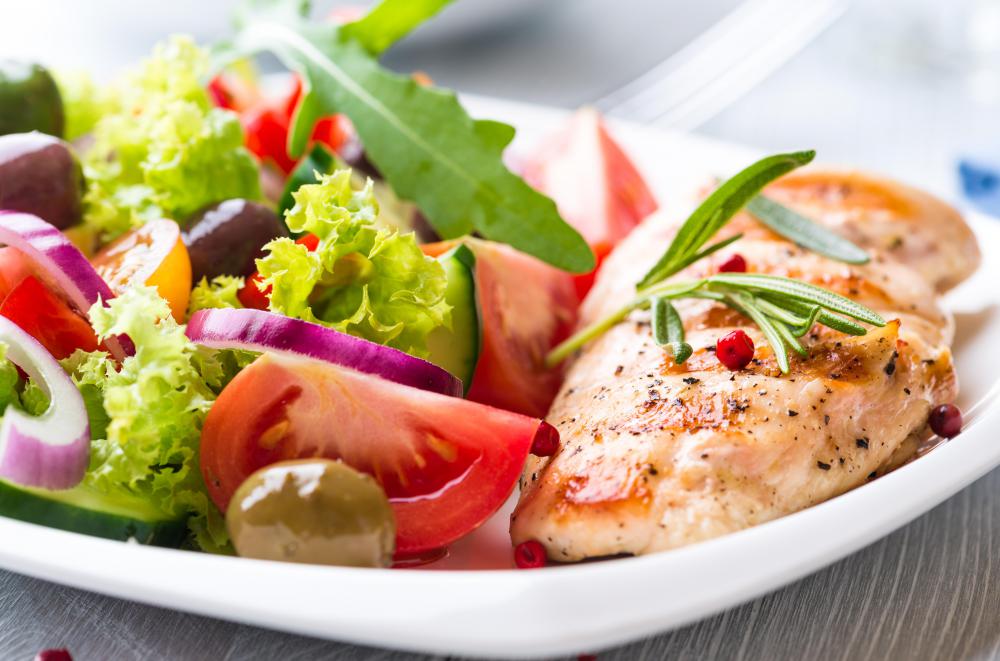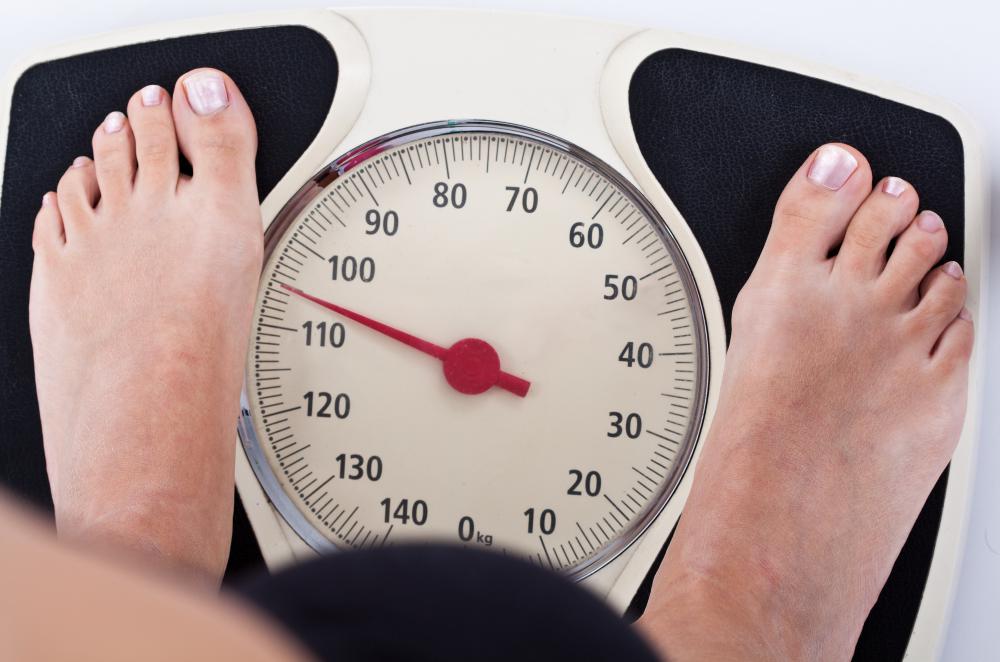At WiseGEEK, we're committed to delivering accurate, trustworthy information. Our expert-authored content is rigorously fact-checked and sourced from credible authorities. Discover how we uphold the highest standards in providing you with reliable knowledge.
What are Healthy Food Portion Sizes?
Nutritionists and doctors often tell us that we must reduce our food portion sizes in order to lose or maintain weight. This can be challenging since a lot of us don’t know what exactly healthy food portions sizes are. Most of us don’t have a scale on hand to weigh and measure everything we eat, and portion sizes may differ depending on what we’re eating.
One way to tell if you’re eating correct food portion sizes is to use your hands and fists as a guide to measurement. Your stomach is about the size of your two fists put together, though this can vary, so that you probably shouldn’t eat more than two fists of food at any meal. In general, portions of veggies are two fists, portions of meat are one palm, portions of cereals and breads are one fist, and portions of fruit are a half to a full fist. Light dairy products and peanut butter are about palm size.

Another way of measuring correct food portion sizes is to think of how closely the food is in size to other objects. For instance, a serving of chicken or beef should be approximately the size of a deck of cards, and fish can be about the size of your checkbook. Again you can almost always eat more of green vegetables than anything else, so consider two fists when considering vegetable intake.

One measurement that may help when determining food portion sizes of things like butter or mayonnaise is to consider a standard sized dice. Generally a healthy portion of butter should equal the size of one die. If you like cheese have three or four dice worth.
If you’re preparing food at home and you don’t want to measure and weigh everything, you can do a few things to reduce portion size. First, don’t consider your plate as an object that needs to be entirely covered by food. Leave some space on the plate. Second, invest in slightly smaller plates. By having a smaller plate and leaving some space on it, you are likely to eat smaller portions. Of course this fact may be mitigated if you have second and third helpings.

When you’re out, pay attention to what and how much you’re eating. If the food seems well above portion size, then take some home in a container. Also, some people confuse food portion sizes with serving sizes on packaged food. Serving sizes can be regulated on lots of things and they don’t necessarily represent a whole portion or they’re far more than a portion.

Of course if you keep thinking about the fist method, you’ll pretty much be able to determine how much of things you can eat. Remember though, you don’t have to keep eating if you haven’t quite eaten a full portion size. This is simply a general guideline for healthy eating.
If you still need additional guidance, consider searching on some food health website like MyPlate, run by the US Department of Agriculture (USDA). The USDA has terrific tips of determining food portion sizes and for eating healthfully.
AS FEATURED ON:
AS FEATURED ON:














Discussion Comments
Slimmerings solve the problem. You can use any plates or bowls you like, but your meal will be the same size each time. If you want to lose weight you just go down to the next Slimmering.
A tennis ball size of pasta is fine. half a fist is expecting us to starve, especially when some have small, small hands.
I agree with the smaller plate size. In Europe the plates are smaller than in United States. On a large plate regular portion sizes look smaller so we tend to put more food on it, and as the result eat much more then we should. The best size for a dinner plate is 9 inches. It is wise to use small bowls and small glasses too.
Here are some additional handy measurements:
one serving of cooked pasta is one half cup, about one half of one's fist.
one serving of cereal is the size of a clenched fist
Post your comments